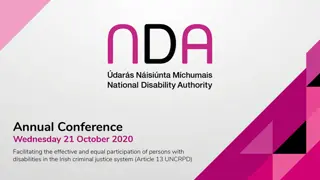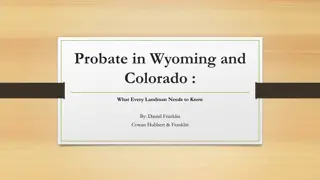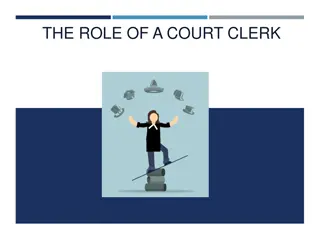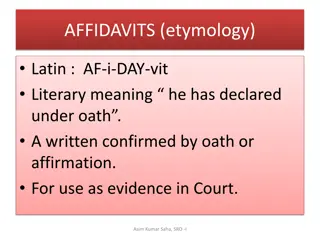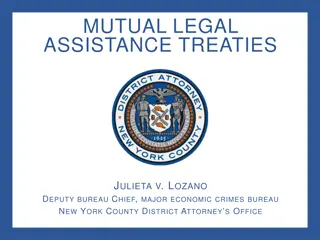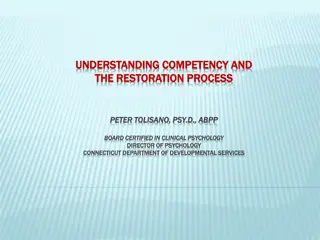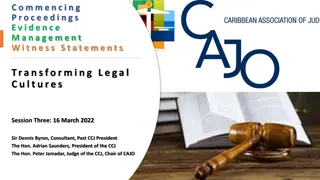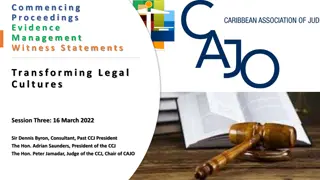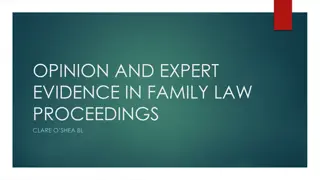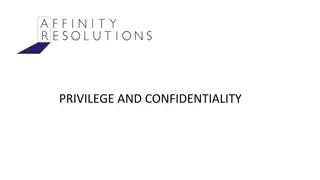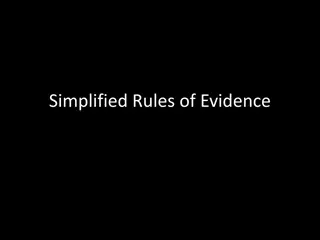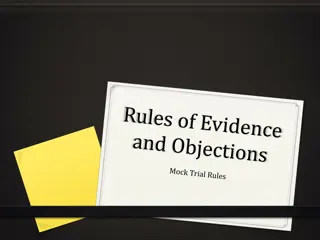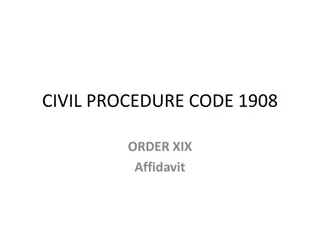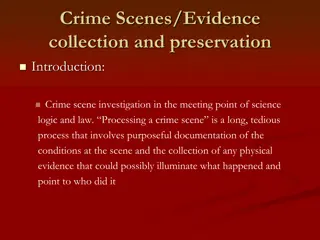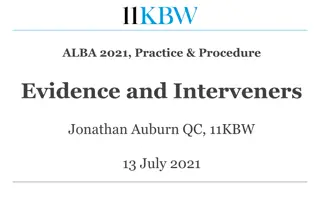Understanding Context Evidence in Legal Proceedings
Context evidence in legal proceedings refers to evidence of acts not charged in the indictment, used to provide a background for understanding specific allegations. This type of evidence is often relied upon by the prosecution to explain events or behaviors that may seem isolated or surprising. It is commonly used in cases of child sexual abuse, adult sexual assaults, and domestic violence. Before admitting context evidence, its purpose and relevance to the complainant's allegations must be established.
Download Presentation

Please find below an Image/Link to download the presentation.
The content on the website is provided AS IS for your information and personal use only. It may not be sold, licensed, or shared on other websites without obtaining consent from the author. Download presentation by click this link. If you encounter any issues during the download, it is possible that the publisher has removed the file from their server.
E N D
Presentation Transcript
CONTEXT EVIDENCE Or how does that get in?
What is context evidence? Context evidence is evidence of other acts that are not charged in the indictment. The purpose of the evidence is to place the specific allegation or allegations that are on the indictment in the context of the overall allegations in order to understand the particular allegations that have been charged.
In RG v R [2021] NSWCCA 173 Simpson J with Campbell and Whealy JJ agreeing, said The evidence of which complaint is now made, if believed, established a pattern of behaviour in which the complainant was relatively unsurprised by the conduct the subject of the charge, and made no response, nor any subsequent report. In that respect, it explains her behaviour, which may otherwise have appeared surprising and therefore implausible to the jury : at [38]
Context evidence will usually be relied upon by the prosecution to explain an event that would otherwise appear to have happened out of the blue , in startling isolation or to explain why it was that the complainant did not complain. While the evidence is not admitted to prove the guilt of the accused, its affect is in bolstering the credibility of the complainant.
When can context evidence be used? You will most often see context evidence admitted in cases of child sexual abuse. This is not a hard and fast rule however. Context or relationship evidence is being regularly admitted in cases involving allegations of adult sexual assaults and cases of domestic violence as well.
How do they get the evidence in? Before context evidence can be admitted, it is important that the purpose of the evidence is identified. It is not enough that the evidence identifies a relationship between the complainant and the accused. For this reason, it is preferrable to avoid speaking about relationship evidence.
The evidence needs to be necessary and capable of providing context to the complainant s allegations: Norman v R [2012] NSWCCA 230. In DJV v R [2008] NSWCCA 272 McClellan CJ at CL (Hidden & Fullerton JJ agreeing) stated that evidence of relationship will only be admissible if it is relevant because it may assist in the evaluation of other evidence going to a fact in issue. In particular it may provide the context in which to understand a narrative : at [28].
His Honour went on to say: Unless the other evidence in the trial and the issues which it raises make it relevant to prove the context in which the alleged offence or offences occurred, it will be almost inevitable that the discretion should be exercised to exclude the evidence. In most cases relevance will be occasioned by an apparent lack of complaint by a complainant whose will has been overborne from a young age or who has feared the consequences of making a complaint about a family member : at [28]. Where the evidence is not capable of providing that context, it must be considered whether the evidence is relevant or whether it is properly considered to be tendency evidence. The distinction is important because of the different standard of proof that attach.
What is the standard of proof? HML v The Queen (2008) 235 CLR 414 confirmed that the standard of proof for evidence relied on to establish a sexual interest in the complainant was proof beyond reasonable doubt: see Hayne J at [247]. This is the approach that has been adopted in NSW: DJV at [30] However, in circumstances where the Crown relies upon uncharged acts, the High Court in The Queen v Dennis Bauer (a pseudonym) (2018) 92 ALJR 846; 271 A Crim R 558 stated: Contrary to the practice which has operated for some time in New South Wales, trial judges in that State should not ordinarily direct a jury that, before they may act on evidence of uncharged acts, they must be satisfied of the proof of the uncharged acts beyond reasonable doubt. Such a direction should not be necessary or desirable unless it is apprehended that, in the particular circumstances of the case, there is a significant possibility of the jury treating the uncharged acts as an indispensable link in their chain of reasoning to guilt : at [86].
In Bauer, this standard of proof was said to be applicable in cases of single complainant sexual assault trials, leaving open the question of the appropriate direction where the case involves multiple complainants. In Jackson v R [2020] NSWCCA 5, Price J (Hoeben CJ at CL and Walton J agreeing) observed that there appeared to be no logical basis for different standards of proof that are dependent upon the number of complainants : at [67].
How can I tell what the purpose is being relied on? You need to critically assess the evidence. Ask yourself, how is this going to be used? In DJV the touchstone for admissibility was: There must be an issue in relation to the charged acts which justifies the admission of evidence of other events including other occasions of sexual abuse. Unless there is such an issue the evidence of other acts is likely to only be admissible, if at all, as tendency evidence : at [36]
The appropriate question to be asked is: to what issue in the trial does the evidence go ? (DJV at [36]). From that point questions of the probative value of the evidence including its relevance need to be considered: DJV at [37]. The potential of any unfair prejudice needs also to be considered: ss 135 and 137 of the Evidence Act. In DJV it was noted that: the more remote in time from the offence charged less significance will attach to evidence of other sexual acts : at [52]. In circumstances where evidence of uncharged acts remote to the offences themselves is admitted and it is considered appropriate to give the jury a caution about the evidence, the almost inevitable result will be that the risk of prejudice of the jury misusing the evidence would outweigh its probative value. In this event having regard to s137 the evidence should be rejected. There may be cases where the evidence is properly admitted as context evidence and a caution is required. However, they will be rare : DJV at [52]
The importance of directions to the jury It is critical in cases where context evidence has been admitted to be attentive to the directions given to the jury and alert to the potential that they stray in suggesting a tendency style of reasoning as was the case in SKA v R [2012] NSWCCA 205. In that case Adams J (Hislop J agreeing) noted that whilst it is a difficult distinction to make clear for a jury, it is vitally necessary that they appreciate that context evidence is admitted to enable the complainant to give a coherent account thereby avoiding the apparent lack of credibility that a partial account might have. It is not to prove the true relationship since such language avoids any suggestion of an unfair vacuum but also involves proof of the sexual conduct of the appellant : at [277].



